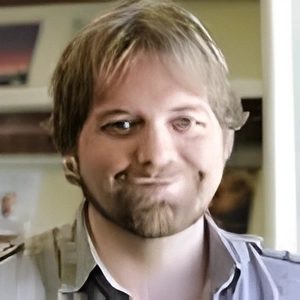The Czech Republic is possibly the only country in the world founded by an artist. Of course, I’m talking about this particular republic and its first president Václav Havel. OK, I may be bending definitions of a founder, country, and artist, but the point is that nearly every other country in the world counts a general, pontiff, aristocrat, tycoon, or revolutionary among its fathers, and most definitely not a playwright.
Considering this is the land of the Bohemian—long the word to define a counter-cultural, anti-establishment, permissive way of life—it makes perfect sense that in the years after the revolution the country would become a beacon for like-minded travelers including myself when I taught English for a year in Anděl in 2001. Returning to Prague last January after 17 years, including the past four in Brooklyn and Queens, I was eager to discover what’s bubbling to the surface at the original well-spring of bohemianism.

Photo: Krymská / Facebook
Certainly, the auspices looked good, with the Prague scene—particularly in Žižkov, Letná, Holešovice, and Vršovice—praised often in A-list newspapers and magazines worldwide. Krymská street, considered by many as the epicenter of Prague cool, was even named one of the best streets in Europe by The New York Times.
Shortly after I arrived, I got the first chance to see the new bohemians, now called “hipsters” like their Brooklyn and Berlin brethren, in their element at the annual Korso Krymská Festival in May. Indeed, the somewhat gritty, sloping, cobbled street was filled wall-to-wall with the young, energetic, and cool, flowing up and down the street like lifeblood through the veins and clotting hotspots created by guitar-wielding buskers, ‘80s DJs, organic food trucks, beer taps, and live painting.

Photo: Krymská / Facebook
It all seemed remarkably familiar:
The Hornbrille glasses, lumberjack beards, mustache wax, vintage blouses, back-turned baseball hats or front-turned ivy caps, denim cutoffs, lethargic speech patterns, usually inflected with that heavily affected accent you could imagine saying things like, “I don’t eat anything with the letter C in it.” Indeed, I half expected to stumble upon an entrance to the L train in Williamsburg. That’s not to say Krymská isn’t fun, cool, or exciting, but bohemian, no.
“So, why does Bohemia now import its bohemianism?”
For Prague’s most famous street artist, David Černý, the term is part of the problem. “I would rather say infected than imported,” he explains. “We are living in a global same culture that is the same everywhere since it is so quickly connected.” Before the Internet, “That was a time when people actually had sex, not hip iPhones.”

Photo: Lucerna rooftop / Facebook @Karel Kája Smola
Outside Café V Lese, Pavel Turek, a journalist with Respekt magazine, remembers his first exposure to the new hipsterdom, while visiting New York in 2005. At first, it was very positive. “I was amazed how many people of the same style, and the same way of living, were all in one neighborhood,” he recalls, “it was something I wasn’t familiar with in Prague, where the districts were not so specific yet.”
In more recent times, his esteem for the term “hipster” has fallen along everyone else’s. “I must say I take it in a negative way,” he explains. “Because I can see how hipster is a very useful middle man between marketing machine and the street. It doesn’t matter if we talk about Bobos (bourgeois bohemian), hipsters or yuccies (young urban creatives), there is a lot of downside to this phenomenon when it is only connected with consumerism, with more style than substance.”
One new Bohemian with more substance than style is Ondřej Kobza, owner of Café V Lese, who is responsible for both the pianos set up around Prague, as well as the famous “Poeziomat” (aka poetry jukebox) in Náměstí Míru, and now a public garden (chickens included) on the roof of Lucerna Palace, where he plans to run workshops on composting, butterfly releases, and stargazing. He points to another hipster hotspot as inspiration for his efforts but not responsibility. “Although it is possible to trace the beginnings of such activities to Berlin, it doesn’t necessarily mean Berliners invented it. It’s simply human nature.”

Photo: Boho chic Café V Lese / Facebook
But what’s specifically “Bohemian” or Czech about it all still remains elusive and admittedly difficult to define, even for artists like Černý in relation to his own art. “I have the same kind of sarcasm, disrespect, and agnosticism known here,” he considers, which aligns well with the bit of bite that’s always fueled Prague’s love of a good spanking. As native Bohemian Franz Kafka once famously wrote, “Prague never lets you go. This dear little mother has sharp claws.”
Perhaps the issue is that in today’s affluent, free, and largely peaceful Prague, there’s little to snap back at anymore. Since the days of Boii tribes fighting the legions of Caesar, resistance has defined Bohemian (or Boiohaemum, as the Romans would say) spirit, be it the preachings of Huss, the war chants on White Mountain, the writings of Kafka, the music of the Plastic People of the Universe, the flames of Jan Palach, or the rot of prison for Václav Havel.
Meanwhile, on Krymská, a new IPA has been tapped and snapped by an app.












 Reading time: 4 minutes
Reading time: 4 minutes 



























